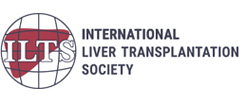Liver Cancer
What is Liver Cancer?
Cancer is the uncontrolled division of abnormal cells. Liver cancer may begin as a mass of abnormal cells called a tumour. Benign tumours remain localised and do not spread to neighbouring tissues. Malignant tumours begin to spread to nearby tissues, lymph nodes or organs, disrupting their function. Most liver cancers are malignant and may lead to liver failure.
The liver is situated in the upper right portion of your abdomen and performs some of the body’s vital functions such as:
- Production of bile
- Storing sugars in the form of glycogen
- Purifying blood from harmful substances
- Making proteins that help in blood clotting
- Fighting infections by removing microorganisms from the blood
The most common type of liver cancer is called hepatocellular carcinoma, which begins in the liver tissue and spreads to nearby organs. Some cancers begin in the bile ducts and spread to the liver.
Stages of Liver Cancer
Most people with liver cirrhosis (a degenerative disease of the liver resulting in scarring and liver failure) can develop liver cancer. The 4 stages of liver cancer are:
- Stage I: A small localised tumour (about 2cm) is present in the liver tissue.
- Stage II: The size of the tumour is larger than 2cm and has spread to nearby blood vessels.
- Stage III: Cancer has spread to nearby blood vessels and lymph nodes.
- Stage IV: Cancer has moved to distant organs.
Symptoms
The symptoms of liver cancer include:
- Yellowing of the eyes and skin
- Itchy skin
- Abdominal swelling
- Fever and chills
- Nausea and vomiting
- Loss of appetite
- Unusual weight loss
- Dark-coloured urine
- White, chalky stools
- Easy bruising or bleeding
- Feeling of a lump at the right side of your abdomen
Risk Factors
The common risk factors that can cause biliary tract cancer include:
- Advanced age
- Smoking
- Obesity
- Diabetes
- Viral infection (hepatitis)
- Excess alcohol consumption
- Exposure to toxins
- Family history of liver cancer
- Certain disorders such as Wilson’s disease, alpha -1-antitrypsin deficiencyor tyrosinemia
Diagnosis
Your doctor will assess your symptoms and perform a physical exam. The following diagnostic tests or procedures may be ordered:
- Liver Function Test: Liver cancer cause the abnormal release of liver enzymes in the blood. A liver blood test or liver function test (LFT) is used to investigate the elevated release of enzymes such as Alanine Transaminase (ALT) or Aspartate Transaminase (AST).
- Imaging Tests: Images of the liver are obtained by performing CT scans, MRI and ultrasounds.
- Angiography: This is a test that examines the arteries that supply blood to the cancerous mass. A contrast dye is injected into the artery while x-ray images are taken.
- Biopsy: A small piece of liver tissue is obtained and observed under a microscope for the presence of cancerous cells.
Treatment
Treatment depends on the stage of cancer and can involve one or more of the following options:
Chemotherapy
Chemotherapy is the use of drugs to treat cancer. The drugs may be pills or intravenous injections.
Radiation Therapy
High-energy particles or waves such as X-rays and gamma rays are used to kill or damage cancerous cells.
Targeted Cell Therapy: This involves the use of drugs which specifically target certain proteins in cancer cells to destroy them but does not damage the other cells of the body.
Biological Therapy
A healthy immune system is necessary to fight cancerous cells. Biological therapy involves administering interleukins or interferons (types of proteins) to naturally defend your body against cancerous cells.
Ablation
It involves the use of certain chemicals or heat under local anaesthesia to destroy the tumour.
Liver Transplantation
Your doctor may suggest liver transplantation in the case of liver failure due to cirrhosis or cancer. Liver transplantation is a surgical procedure to replace a damaged or diseased liver with a healthy one. The whole or a part of the liver may be transplanted from another person (donor). Usually, a family member or a close relative is the donor. The liver can also be transplanted from a recently deceased donor.
Hepatectomy
Surgical removal of a part or the whole of the liver is called liver resection or a hepatectomy. Liver resection is usually performed to remove liver tumours. For small and superficially located benign tumours, a laparoscopic approach can be employed for the resection. Liver resection does not require blood transfusion and takes about 3-5 hours. Up to 75% of the liver tissues can be safely removed by a liver resection. The patient may be required to stay in the hospital for about 5 days after the procedure. The liver is capable of regeneration. The complete regeneration of the resected liver to its original size may take 6-8 weeks. Good nutrition with a high-protein diet is crucial. However, a cirrhotic or extremely unhealthy liver is not capable of regeneration.





